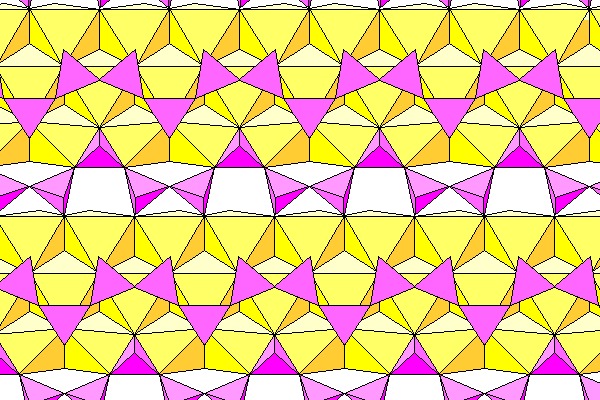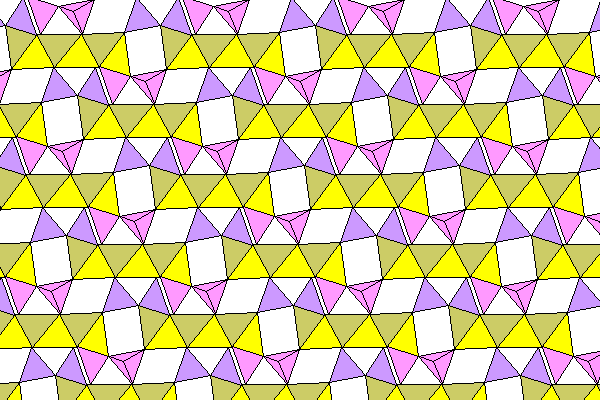Wollastonite Structure
Steven Dutch, Professor Emeritus, Natural and Applied Sciences,
One of my most vivid field trip memories is encountering a dazzling white wollastonite marble in the desert in California. It had huge spears of wollastonite and was so tough sledgehammers simply bounced off it. (It's no longer collectible, alas, since it's inside the expanded boundaries of Death Valley National Park.)
Since calcium is a large cation, it won't fit into the M1 sites of a standard pyroxene. The only way to accomodate silica chains to it is to kink them differently. The chains consist of scalloped chains with a repeat interval of three.

- A conventional pyroxene chain with cation octahedra. The medium-sized cation forms an octahedron small enough for pairs of tetrahedra to span.
- If the cation is calcium, the octahedra are too big for silica tetrahedra to link.
- A side view.
- The only way to link tetrahedra across the Ca-O octahedron is to cant them toward each other.
- Canting the tetrahedra inward allows pairs to link up, but then there is no way to link the pairs.
- We can form chains by alternating mirror image pairs of tetrahedra, but note that the chains now cut obliquely across the chains of Ca-O octahedra, as shown below. The structure is made up of en echelon segments of Ca-O chains, or three parallel chains of octahedra joined along opposite edges.

Below: a view of wollastonite perpendicular to the silica chains. Yellow denotes Ca-O octahedra, and pink and purple signifies silica tetrahedra.

Below: end view of the wollastonite structure

Return to Mineralogy-Petrology Index
Return to Thin-Section Index
Return to Crystals and Light Index
Return to Crystal Structures Index
Return to Mineral Identification Tables
Return to Professor Dutch's Home Page
Created 22 April 2013, Last Update
Not an official UW-Green Bay Site